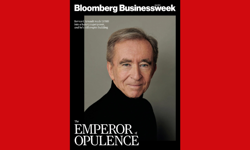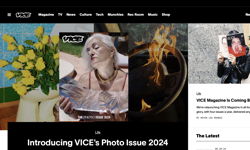
In January 2018, we knew it was time to change.
The Big Issue had delivered a third annual ABC rise. Our vendors had enjoyed a record-breaking Christmas. In summer 2017, we had moved magazine production that had previously been outsourced in London back inhouse to the Glasgow office. It was a vital and big shift. The Big Issue editorial and production facility for the four editions – Scotland, England, Wales and South West England – was for the first time together and working out of the Glasgow base. As other titles outsourced, we pushed the other way.
We hired an entirely new design team.
We also hired a digital editor, the first time The Big Issue had had one. We hired a social media editor, again a first. We assembled an incredibly strong team.
That level of reorganisation takes a lot of planning, time and lots of people working to a singular goal. All felt like a result. However, at that high point, me and Russell Blackman, our tireless, ebullient publishing MD, knew it was time for a change. We’d built this platform not to look around and congratulate ourselves. It was to propel The Big Issue further.
The first thing to change was the magazine itself.
Over time, things get added to pages and they become cluttered. Navigation that was once clear is muddied. Suddenly, it’s a magazine that you need to stand beside a reader to explain. And that would take a long time every week.
It’s worth taking a step backwards.
We understood the strength and power of The Big Issue brand but weren’t doing enough with it.
The Big Match
The move of production to Glasgow wasn’t just to have more people in to marvel at the Trossachs. In August 2017, we worked with Southampton Football Club and the Saints Foundation to publish a special edition of The Big Issue. It was a match day programme for Southampton’s first home game of the season (a scrappy nil nil with Swansea, since you ask). We hadn’t undertaken this sort of project before. We produced a unique printed product that carried The Big Issue tone and identity, mixed with the matchday essentials (teamsheet on the back page) and content about the work of the Saints Foundation in their local community.
The extra kicker was that some Big Issue vendors who were involved in selling the special edition on the day and in the week leading up to it, were then taken through work programmes with the Saints Foundation. It meant The Big Issue was doing what the whole organisation works to do. Prevent poverty by providing opportunity.
This project was not by accident. The growth in the Glasgow office was to develop capacity to accommodate contract work.
But not normal contract work. We understood the strength and power of The Big Issue brand. The name is well known, but we, as a publishing part of the company, weren’t doing enough with it.
Hardwired within The Big Issue identity is an essence of the outsider, something far from the establishment, political and dogged, challenging, compassionate and a voice for those without a voice. It’s funny, not fusty. That has been the core since The Big Issue was set up in 1991 by John Bird. That courses through The Big Issue still. We knew that as the publishing world shifted, a different route into contract publishing, bringing the identity and brand to bear, could open a new way of working. And we decided to make it a key part of our development.
The Big Issue exists for the men and women on the street. Society might marginalise them. We won’t.
Ask the readers
At the same time, we began undertaking some deeper research into attitudes and behaviours. Like a lot of publishers, we’d conducted the occasional reader survey. But as these tend to be self-selecting, it’s not always clear if they are totally honest, or somebody is just trying to win an iPad. Which is fair enough.
We also, like many publishers, were increasingly able to monitor reader interaction, and reaction, across social media. For an organisation like The Big Issue, that is lean and works to tight and understood margins, social media has proved a boon.
But we knew we needed more. We worked with Latimer Group to ask younger readers across Britain what they really liked about The Big Issue, what they didn’t like, what was missing and what would help turn digital natives into purchasers of the paper product. This was a deep dive.
As this research was happening, we were also starting to seed different stories through the website to see what connected with readers. Our new digital editor, Ben Sullivan, began to register some trends – pieces that encouraged activism were cutting through, as were those on food, particularly around production, waste and access. Tech, especially stories about tech that could positively impact on the lives of those outside the mainstream, were being widely read.
It didn’t exactly provide a lightbulb moment. Instinctively, we had understood this. But, it was coming through empirically. And it tallied with what we were being told through the Latimer work.
We had clarity around what was needed in content. The next step was to work out what was for the magazine, what would work as digital only, digital first or across all platforms.
By January 2018, we’d also hired Ross Lesley-Bayne as our art director, and we had everything in place. We used the entire editorial team, including some of our key freelancers, and started to start again.
We binned elements that didn’t work. We tried to do this without sentimentality. We kept those that were core bankers – the vendor content, the Letter To My Younger Self interview, the books content.
We brought in the things we’d been learning through online experiments and the Latimer groups. The changes were radical. From font families to imagery, from navigation front to back, we changed it all.
We’ve opened up the front of the book.
The opening DPS is now The Big List. It’s a not a new idea – essentially a listing of things across Britain and localised to one of the four editions we cover – but it offers a clear view of The Big Issue identity straight away. There is a focus on campaigns we believe in, that we want to alert the reader to. We also weave in info that Big Issue Invest – the social investment arm of The Big Issue group – has been doing, how they have been helping communities across the nation to rebuild and help themselves.
We’ve opened up the correspondence page to a DPS. The sense of togetherness, that readers, vendors and those of us who produce and distribute The Big Issue are part of a community, is something we want to make sure we allow to rise.
There is a new Fact / Fiction page. We know readers trust The Big Issue and we know there is a breakdown in trust in other elements of media. In this space, we layout a story that grabbed hold in the previous week and we investigate how much reality and truth there is to it. We check the facts. Tone is key. If this was a sneering, snooty supercilious page, it wouldn’t work.
We introduced Changemakers, a page detailing the thinkers, the creators, the agitators. This is a core new part. It’s a profile piece on somebody who has tackled a problem and tried to fix it. It’s shamelessly congratulating those who are changing things for the better, some of whom were helped on their way up by investment from Big Issue Invest.
This grew in popularity so much that early in 2019, we ran with our top 100 Changemakers for 2019. It was a special edition that we will repeat annually. The germ of the idea had been around a while, but the development grew after listening to research.
We’ve changed the back of the book a lot. The arts section used to be called The Enlightenment. It’s now simply Culture. We opened the pages, brought in new illustrators – a sense of space and imagery lifting off the pages rather than banks of texts was a key part of the entire change.
We have new pages for tech, food, health. We have a travel guide that takes the reader to cities around the globe but presents them from the point of view of a street paper vendor in that city. We added to our brilliant core set of critics – respected, smart writers including Sam Delaney, Jane Graham, Malcolm Jack and Robin Ince with people who really know their field – including Dani Garavelli, Chris Deerin, Cath Clarke and Graeme Virtue.
Sadly, I’ve had to drop Spot The Ball. It was delivering diminishing returns (nobody was bothering to mark the place, cut out the picture and post it in. Damn it all!)
One key part that remains is a vendor who opens and closes the magazine. On page 3, the vendor introduces the content and on the final page they tell their story. The Big Issue exists for the men and women on the street. So long as they need us, we are here. Society might marginalise them. We won’t.
Print lives. Print, done well, thrives. Even Buzzfeed wants a part of the print action.
Money from the cashless
And it’s on the street that some of our most exciting developments are galloping. In an accelerated societal move to a cashless economy, we knew we had to find a way for our vendors to be able to sell the magazine to customers who want to buy but just don’t carry cash anymore.
It’s not just about providing card readers. If it were, we’d make sure all our vendors had access. It’s about bringing the socially and financially excluded into banking, something that presents challenges for those without a permanent address.
We’re working it out. An ongoing trial in conjunction with iZettle involving around twenty vendors using card readers is paying dividends for them. It’s being extended further this spring. And it’s inclusive. It’s opening a door for those previously left outside.
We’re also working a lot on augmented reality. People do everything with their phones to hand, so why not add more to the page that they can access through their phones.
Working with Konica Minolta, we ran a special AR edition in early January. We have since included AR elements in magazines most weeks. It’s extra work, but it keeps the reader on the page and I believe it could change things very positively for print magazines.
Print lives. Print, done well, thrives. Even Buzzfeed wants a part of the print action.
Of course, we are continuing also to develop our digital first elements, with a focus on news and analysis unique to our website. It’s part of the bigger picture.
We rolled out our magazine new look in November 2018. In our big Christmas week, vendors sold 315,000 copies. No offers, no subs, all sold on the street – the biggest Christmas week sale ever.
At The Big Issue, our new model is making us a smart, nimble, modern publishing organisation. We are going to grow.
While it’s been important for us to listen, I think it’s also vital to lead. Readers look for us to have a trustworthy, informed voice. In this period of incredible flux, we have to challenge what is not right, and to stand up for what is. A title with responsibilities has to stand up and accept them. We are a title with a voice, and that voice will sound loud.
We are here for the future so our vendors, the people who need us most, have us doing all we can to help them do what they can.
In this period of incredible flux, we have to challenge what is not right, and to stand up for what is.












